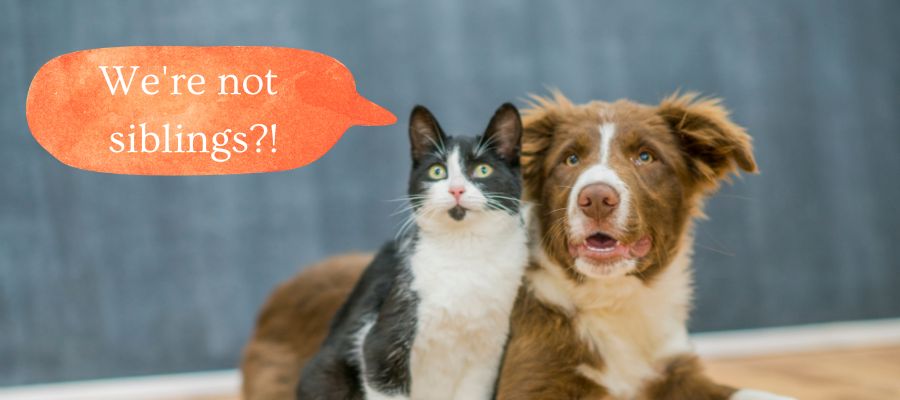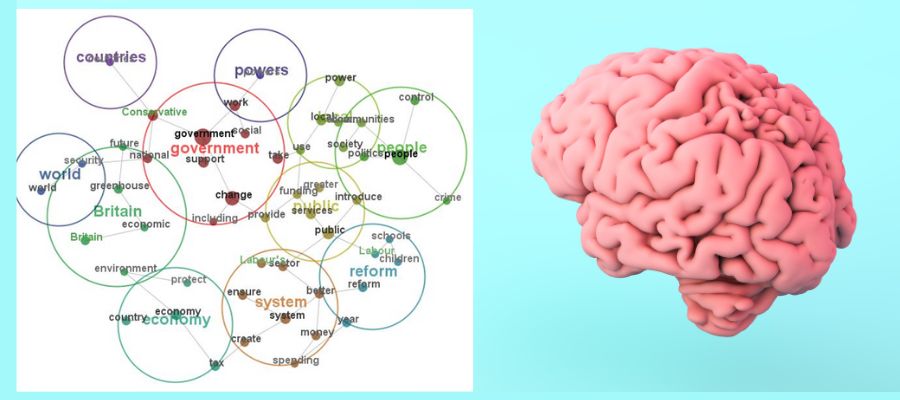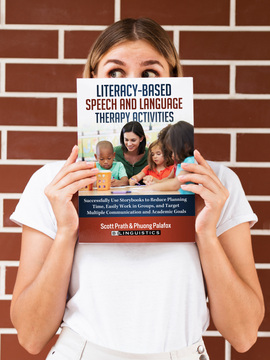One aspect of how developed a person’s language is, relates to how successfully they access and use vocabulary. This usually develops with age and it serves as a tool throughout life and throughout education. It’s also a big measure of how well a child is doing in the classroom. Hundreds of new words are taught each week and most children learn them without much trouble. But how does this happen so naturally? A look into vocabulary research not only gives us the answer but paints a very clear picture as to what we should be doing when a child is not retaining the words that she is taught.
Three vocabulary research theories explain how vocabulary is successfully learned based on the categorization of words, the relationship between words, and the experience and knowledge that a child has about the word.
I want to share an easy explanation of these studies and how we can use it to immediately impact speech therapy when a child has semantic or vocabulary deficits.

Vocabulary and Cognitive Equilibrium – Piaget – 1972
Swiss psychologist Jean Piaget came up with one of the most accepted models for describing how vocabulary is acquired and maintained. It goes like this: when we’re introduced to new vocabulary, we need to assimilate it into a category first. We don’t have a category until multiple words within that group are needed.
For example, a child calls all animals “doggie” until he sees two animals side by side that are different. And then he has doggy and kitty, and he needs a category called “animals.”
Equally so we see an adult example on our desktops. You all probably have a document or spreadsheet hanging around until you have two. Then you need a folder called “evaluations” or whatever they refer to. This is your category.
Vocabulary Therapy Point #1
Piaget is telling us that we should include categorization into our vocabulary teaching to help a child organize and relate things in their world.
I like what Piaget had to say because it seems natural and especially makes a lot of sense with bilingual children. It explains how NEED and ENVIRONMENT dictate the priorities of learning new words. This is why we see emergence of nouns and verbs before prepositions and adjectives. Those are less significant to the message and harder to categorize. But this theory does not do a great job at explaining limited vocabulary and the use of circumlocution. That’s where Collins & Quillian’s work comes in.

Semantic Network Model – Collins & Quillian – 1969
An oldie but a goodie, this has to be one of my all-time favorite research descriptions because the first time I read this I thought; “are these guys looking in my head?” I feel like it is exactly how the brain is laid out, exactly how we learn new words, and exactly why we say funny things at times and make vocabulary mistakes.
The Semantic Network Model is more applicable to speech pathologists because it explains the attributes of words (adjectives) and the relationship between words. Here’s what it looks like: Imagine that your head is packed with bubbles. These bubbles are Piaget’s categories. But in this case, they ooze over and create elegantly complex Venn Diagrams.
If the animal bubble crosses the red color bubble, we would have cardinals, red pandas, and tomato frogs in the common space. Here’s why this is cool: it explains why a child calls a squirrel a rat or a lizard a frog. It explains why we beg for help remembering things with circumlocution:
“You know, he is that actor, doesn’t have hair, starred in Jumanji, used to be a pro-wrestler…YES The Rock!”
We are slowly walking our friends into more and more specific bubbles, hoping they can help us out so we don’t have to Google it.
The semantic network model does a good job of explaining word retrieval. Think of how important this is in terms of the number of times we ask a child to “define a word,” “tell us more” or “be more descriptive.”
Vocabulary Therapy Point #2
Quillian are telling us that we have to highlight the adjectives, attributes, and descriptions of vocabulary in order for the words to be able to be recalled more easily.
This vocabulary research also explains why typically developing bilingual children mislabel objects with a name from the same category. And, it gives us a red flag for children who are truly struggling because children with a disorder are more likely to not say the word or use something like “that” or “thing.”

The Rippling Effect – Nevid – 2009
Those prior two bodies of vocabulary research are still pillar studies and have carried us through the last half century but as special educators we still have a problem.
Why can most students hear and learn thousands of words effortlessly and some students in the same class don’t get it?
We hear teachers say things like: I teach and I reteach…, I sent word lists home…, she sits right in front of the word wall.
As much as I love the Semantic Network Theory, it kind of falls short is describing why a bubble is as big as it is and why in some kids the bubbles expand and contract so rapidly.
The rippling effect says that our connections to a word, make that word stronger. So if we think about FACT (function, attribute, category therapy) that we highlight in our course on vocabulary, the more we know about a topic and our experience with the topic cements the vocabulary in place. Our goal is to truly understand why, how, and where an object is used to be able to recall the “name” of the objects. Here are two examples of very disparate situations:
| Vocabulary Topic | Rich Experience | Low Experience |
|---|---|---|
| Ocean Concepts | A child who lives on the coast, has gone to the aquarium, has an aunt who fishes, tasted salt water, smelled dead seaweed | A child who saw one episode of Sponge Bob |
| Transportation | A child whose parents reads to him, has taken road trips, made models with his dad | A child who walks to school |
Nevid tells us that teaching vocabulary is not about words. Saying the word is the outcome of having vocabulary experience.
Vocabulary Therapy Point #3
Nevid tells us to create a rich experience that includes the attributes, relationships, function, and groups of an object. Don’t focus on the name itself.
Giving students rich experiences with the smells, sounds, tastes, videos, situational stories that include the vocabulary is how we create excitement and true inroads into memory. What I like about this vocabulary research is also that it is equitable, and we can use media to give children experiences that they may not have had.
Resources:
Need CEUs and Want to hear the full story? Check out our online course: Evidenced Based Strategies for Teaching Vocabulary
Hollan, James D. “Features and semantic memory: Set-theoretic or network model?.” (1975): 154.




